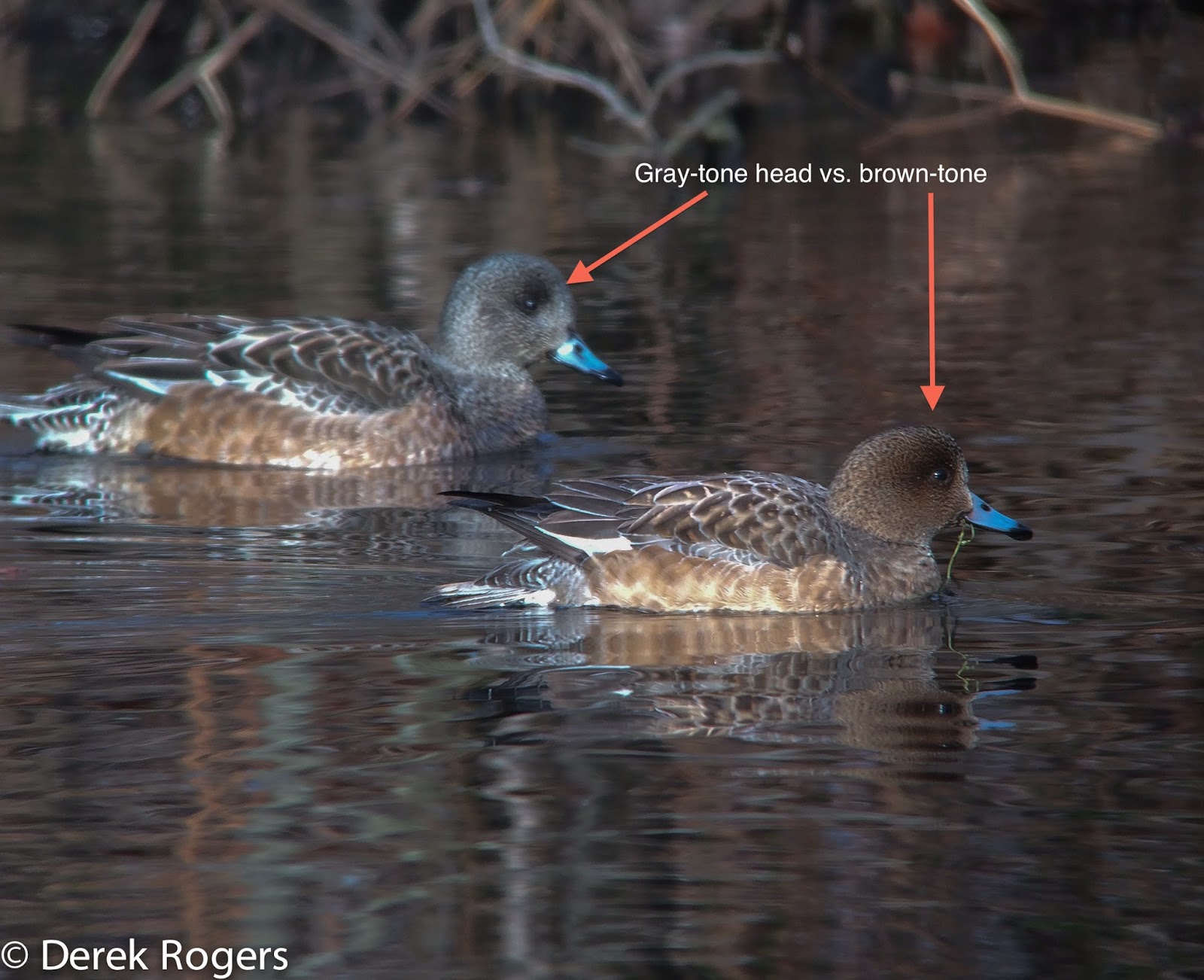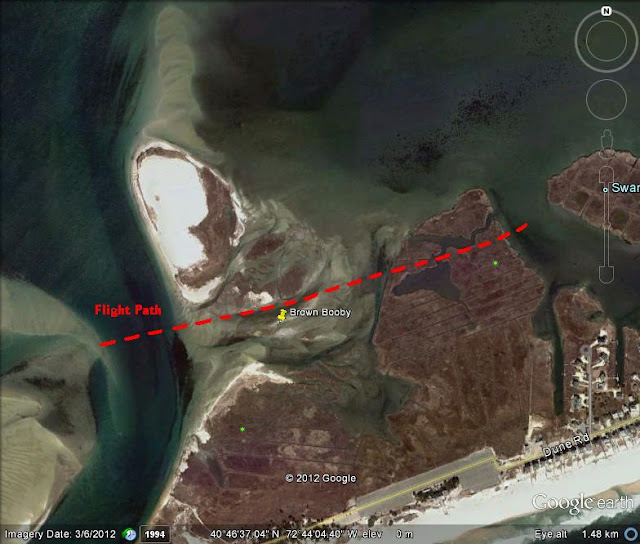 |
| Red-breasted Nuthatch Derek Rogers |
During last Fall and Winter, you'd have been hard pressed to find a Red-breasted Nuthatch around Long Island. Some of their historic breeding sites, like the pitch pine forests at Brookhaven National Lab, did hold this species throughout the year. But, for the most part, there was little movement. This year has been a different story. Solid numbers of Red-breasted Nuthatches started getting reported in the late Summer months islandwide. This relatively early arrival time has been, in the past, known to signify a finch irruption. For Long Island, this generally means that the winter finches (Pine Siskin, Purple Finch, Crossbills, and Redpolls) might move south and visit our beaches, forests, and bird feeders. The photo on the right shows a classic view of a Red-breasted Nuthatch. I particularly like the perspective of this shot, the bird's classic, clinging and curious stance, and the background color composition. Another classic iScope image with my
Meopix Adapter.
 |
| Purple Finch Derek Rogers |
On September 13th, I viewed my first Purple Finches of the season at The Conservancy's Edward J. Dorothy C. Kempf Preserve in Wading River. There were 7 individuals bathing and resting within a small ephemeral area beside a brackish creek. Some earlier Purple reports from across the Island had me thinking that I'd soon to run into my first of Fall birds. Since then, I've been seeing Purple Finch regularly, and now daily, since a group of 7 birds have decided to set up camp at my house on October 2nd. I've been enjoying the viewing 2 colorful males and and 5 well-marked females since that date. Purple Finches are generally more of a northern nesting bird. They are widely distributed throughout North America but their range usually tends to encompass more of the northern tier of the continent with the exception of large irruption years.
 Next on the list were Pine Siskins. Early Siskin reports began filtering in along Long Island's barrier beaches. I noticed my first flock of the season in Field 2 at Robert Moses State Park while birding with Chase Cammarota. A group of 2 dozen birds flew across the north hedgerow heading west. Their classic "kdeew" flight call immediately caught our attention as they flew by. These early reports would soon give way to enormous, record-setting numbers as weeks later I noticed almost 2,000 individuals at Smith Point County Park. It's one thing to see birds moving quickly in flight, and it can be frustrating. But there's nothing like having a large finch flock visit your home bird feeders. On October 12th I counted 38 Pine Siskins at my bird feeders in Sayville. They were tame Siskins as well, allowing me to walk within 5 feet of them while feeding. Again, I managed some great shots with my Meopix Adapter and took this fun video as well (if the pixelation is poor feel free to view the video on my Flickr link). Look for Pine Siskins at your bird feeders this winter. If you're lucky, you'll get some really vibrant birds showing brighter yellow wing bars and edging. My flock of 38 contained some real beauties.
Next on the list were Pine Siskins. Early Siskin reports began filtering in along Long Island's barrier beaches. I noticed my first flock of the season in Field 2 at Robert Moses State Park while birding with Chase Cammarota. A group of 2 dozen birds flew across the north hedgerow heading west. Their classic "kdeew" flight call immediately caught our attention as they flew by. These early reports would soon give way to enormous, record-setting numbers as weeks later I noticed almost 2,000 individuals at Smith Point County Park. It's one thing to see birds moving quickly in flight, and it can be frustrating. But there's nothing like having a large finch flock visit your home bird feeders. On October 12th I counted 38 Pine Siskins at my bird feeders in Sayville. They were tame Siskins as well, allowing me to walk within 5 feet of them while feeding. Again, I managed some great shots with my Meopix Adapter and took this fun video as well (if the pixelation is poor feel free to view the video on my Flickr link). Look for Pine Siskins at your bird feeders this winter. If you're lucky, you'll get some really vibrant birds showing brighter yellow wing bars and edging. My flock of 38 contained some real beauties.
I'll remain hopeful that some of the more uncommon species make their way south to Long Island. Seeing Redpolls and Crossbills at close-range in the Black Pines of our barrier beaches is an experience that is difficult to top. Redpolls are one of my favorite bird species and seeing them on Long Island only further fuels my fascination for the Arctic and the Northern forests.


 Next on the list were Pine Siskins. Early Siskin reports began filtering in along Long Island's barrier beaches. I noticed my first flock of the season in Field 2 at Robert Moses State Park while birding with Chase Cammarota. A group of 2 dozen birds flew across the north hedgerow heading west. Their classic "kdeew" flight call immediately caught our attention as they flew by. These early reports would soon give way to enormous, record-setting numbers as weeks later I noticed almost 2,000 individuals at Smith Point County Park. It's one thing to see birds moving quickly in flight, and it can be frustrating. But there's nothing like having a large finch flock visit your home bird feeders. On October 12th I counted 38 Pine Siskins at my bird feeders in Sayville. They were tame Siskins as well, allowing me to walk within 5 feet of them while feeding. Again, I managed some great shots with my Meopix Adapter and took this fun video as well (if the pixelation is poor feel free to view the video on my Flickr link). Look for Pine Siskins at your bird feeders this winter. If you're lucky, you'll get some really vibrant birds showing brighter yellow wing bars and edging. My flock of 38 contained some real beauties.
Next on the list were Pine Siskins. Early Siskin reports began filtering in along Long Island's barrier beaches. I noticed my first flock of the season in Field 2 at Robert Moses State Park while birding with Chase Cammarota. A group of 2 dozen birds flew across the north hedgerow heading west. Their classic "kdeew" flight call immediately caught our attention as they flew by. These early reports would soon give way to enormous, record-setting numbers as weeks later I noticed almost 2,000 individuals at Smith Point County Park. It's one thing to see birds moving quickly in flight, and it can be frustrating. But there's nothing like having a large finch flock visit your home bird feeders. On October 12th I counted 38 Pine Siskins at my bird feeders in Sayville. They were tame Siskins as well, allowing me to walk within 5 feet of them while feeding. Again, I managed some great shots with my Meopix Adapter and took this fun video as well (if the pixelation is poor feel free to view the video on my Flickr link). Look for Pine Siskins at your bird feeders this winter. If you're lucky, you'll get some really vibrant birds showing brighter yellow wing bars and edging. My flock of 38 contained some real beauties.


Comments
Post a Comment